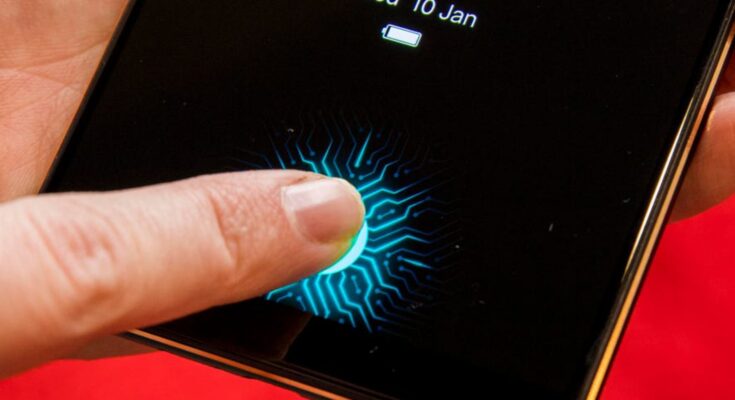Introduction
Fingerprint Lock In the digital age we live in today, mobile phone security has become more significant than ever before. Smartphones are responsible for storing personal photographs, financial details, emails, and even social media accounts; hence, securing the device is a priority. One reliable method to ensure this security, therefore, is to set a fingerprint lock on the mobile screen. Fingerprint Sensor on the other hand gives you a quick, secure, and equally convenient access from the time of installation, and ever since. This stepwise guide will teach you how to set fingerprint lock on different smartphones and why doing so is an important step toward the privacy of your own.
Why Use Fingerprint Lock on Mobile Screen?
A fingerprint lock on a mobile is not just about convenience; it’s also about enhanced protection. Since every person’s fingerprint is unique, it ensures that no one else can access your device. Compared to pattern locks or numeric passwords, a fingerprint lock provides quicker authentication and reduces the chances of an unauthorized person accessing your phone.
Setting up fingerprint security is like adding one more brick in the wall of defense, whether you have an Android or an iPhone. Many users look for how to set fingerprint lock on mobile screen because this security measure prevents data theft, password protects apps, and keeps confidential information safeguarded.
How Fingerprint Technology Works on Smartphones
It is essential to know how to work this tech before we go on to how to set fingerprint lock on mobile. Fingerprint scanners pick up on the ridges and handles of your finger. These patterns then get converted by the phone into a digital template. When you place your finger again, that system matches it against the stored template to unlock the screen.
Mobile devices generally come equipped with three different types of fingerprint scanners:
- Capacitive Fingerprint Scanners – This one detects electric signals from your finger and is found in many Android devices.
- Optical Fingerprint Scanners – They are in some devices and they take images of your fingerprint.
- Ultrasonic Fingerprint Scanners – These are sometimes put underneath the display and offer very accurate measurements.
Knowing these types will help you understand why modern mobiles prefer fingerprint lock on the screen instead of older methods.
Steps to Set Fingerprint Lock on Android Mobiles
Most Android smartphones support fingerprint lock, and the setup process is simple. Here’s a step-by-step guide:
- Open Settings – Go to your phone’s main settings.
- Find Security or Biometrics – Look for options like Security, Biometrics and Passwords, or Lock Screen.
- Select Fingerprint Option – Tap on Fingerprint or Add Fingerprint.
- Enter Backup Lock Method – Before setting the fingerprint, the system will ask you to set a PIN, password, or pattern for emergency situations.
- Scan Your Finger – Place your finger on the fingerprint sensor multiple times until it captures your full fingerprint.
- Save and Activate – Once complete, enable Unlock with Fingerprint.
Now your mobile screen Fingerprint Lock is active, and you can unlock your phone instantly.
Steps to Set Fingerprint Lock on iPhone (Touch ID)
If you are an iPhone user, you can also set up Fingerprint Lock using Touch ID. Here’s how:
- Go to Settings – Open the Settings app.
- Select Touch ID & Passcode – Tap on Touch ID & Passcode option.
- Enter Passcode – Provide your device’s passcode.
- Add Fingerprint – Place your finger on the Home button repeatedly.
- Adjust Position – Move your finger slightly each time so the scanner reads all angles.
- Save Fingerprint – After saving, you can use Touch ID to unlock your iPhone, purchase apps, or secure sensitive data.
Benefits of Fingerprint Lock on Mobile Screen
Setting a fingerprint lock on mobile screen offers several advantages:
- Fast Access – Unlocks your device instantly.
- Enhanced Security – Hard to duplicate compared to PIN or pattern.
- Protects Apps – Many phones allow fingerprint protection for apps like WhatsApp, banking, and gallery.
- User-Friendly – Just one tap instead of typing long passwords.
- Multiple Fingerprints – You can add fingerprints of both hands for more convenience.
With these benefits, it’s clear why so many people prefer fingerprint lock on mobile over other methods.
Common Issues with Fingerprint Lock
Although fingerprint security is reliable, some users face minor issues. Here are the most common problems:
- Sensor Not Responding – Sometimes the fingerprint sensor may not detect properly due to dirt or wet fingers.
- Slow Response – Older devices may unlock slower compared to newer models.
- Fingerprint Not Recognized – If your finger is cut or scratched, the mobile may fail to recognize it.
- Software Bugs – Occasionally, system updates can affect fingerprint performance.
To solve these issues, make sure your hands are clean and dry, and always update your device software.
Tips for Better Fingerprint Security
If you want to maximize the security of your fingerprint Lock on mobile screen, follow these expert tips:
- Register Multiple Fingers – Add both thumbs or index fingers for faster unlocking.
- Keep Sensor Clean – Wipe the fingerprint sensor regularly.
- Enable App Lock – Use fingerprint lock for sensitive apps.
- Use Backup Security – Always keep a strong PIN or password as a backup.
- Update System – Install security updates regularly for better protection.
By following these tips, your mobile will stay more secure and easy to access.
Conclusion
Setting a fingerprint Lock on mobile screen is one of the smartest ways to protect your smartphone from unauthorized access. Whether you use Android or iPhone, enabling fingerprint security ensures your data stays safe while allowing you to unlock your device quickly. From personal privacy to financial safety, fingerprint authentication offers unmatched convenience and reliability. Tiktok Live Apk
If you value your digital security, follow the simple steps mentioned above and activate fingerprint lock on mobile screen today. It’s a small step that provides big protection for your personal information.
Download App
Frequently Asked Questions (FAQs)
1. Can I use fingerprint lock on all mobiles?
No, only smartphones with a fingerprint sensor support this feature.
2. Is fingerprint lock more secure than PIN?
Yes, it is more secure since fingerprints cannot be easily duplicated.
3. Can I set fingerprint lock for apps?
Yes, many Android and iPhone models allow fingerprint-based app locking.
4. What if my fingerprint sensor stops working?
You can use your backup PIN, password, or pattern to unlock the device.



